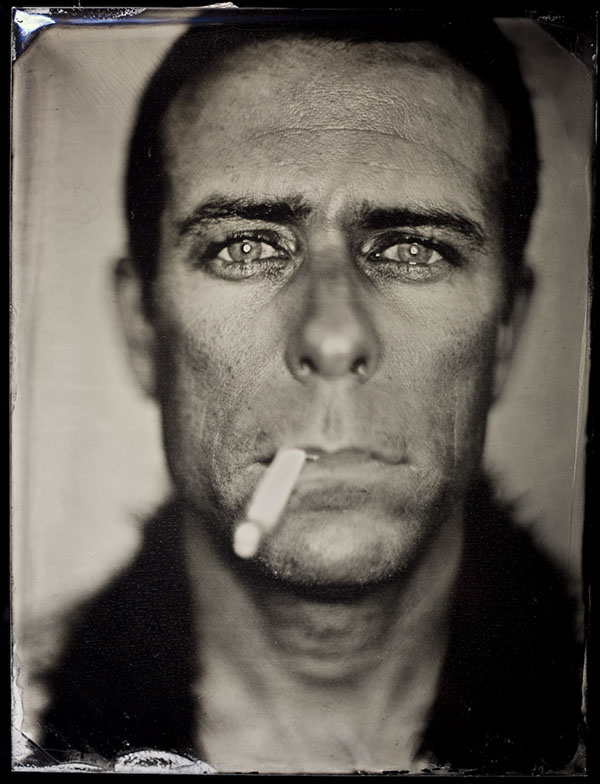
Michael Shindler latest project is tintype portraits of people he meets in his Mission district neighborhood in San Francisco. For Shindler, engaging with people and sharing his knowledge of tintypes is as important as making the work. Though a 19th-century technique, the chemical process of making a tintype is magical. Similar to a Polaroid, the tintype carries a direct and physical imprint of the subject and as the grainless portrait develops on aluminum in the darkroom, it reveals an image unlike any other photograph. Shindler delights in revealing the process with others and takes two photos during his portrait sessions, keeping one and giving one to the portrait sitter. He writes, “making photographs this way, one plate at a time and with exposure times of several seconds, requires communication and cooperation between the photographer and the subject. The work is slow, but it is that slowness that helps to strip away some of the posed, constructed self that people naturally present to the camera.” When tintypes were invented in 1856, they were popular because they were cheap and could be produced on the spot. Shindler’s generous gesture plays with the history of the tintype as a momento while also documenting the diverse faces of his neighborhood.
A San Francisco based artist, Shindler has been making and teaching others how to make tintypes for over fifteen years. His work has been exhibited at Rayko Photo Center in San Francisco.
The Wet-Plate Collodion process, first introduced in 1851, involves coating an enameled metal or glass plate with a collodion mixture, which is then sensitized, exposed and processed all within a few minutes and while the plate is still wet. The resulting image (while technically a negative) is made up of extremely fine silver particles that are creamy-white in color, which allows the image to be viewed as a positive when seen against a black background.
A San Francisco based artist, Shindler has been making and teaching others how to make tintypes for over fifteen years. His work has been exhibited at Rayko Photo Center in San Francisco.
The Wet-Plate Collodion process, first introduced in 1851, involves coating an enameled metal or glass plate with a collodion mixture, which is then sensitized, exposed and processed all within a few minutes and while the plate is still wet. The resulting image (while technically a negative) is made up of extremely fine silver particles that are creamy-white in color, which allows the image to be viewed as a positive when seen against a black background.












Michael Shindler's set-up: A ring-light and two daylight fluorescent banks. He has since moved onto using entirely strobes, which makes much more sense due to the much faster exposure, thus no need for bracing the subjects head as in the photo above.



No comments:
Post a Comment